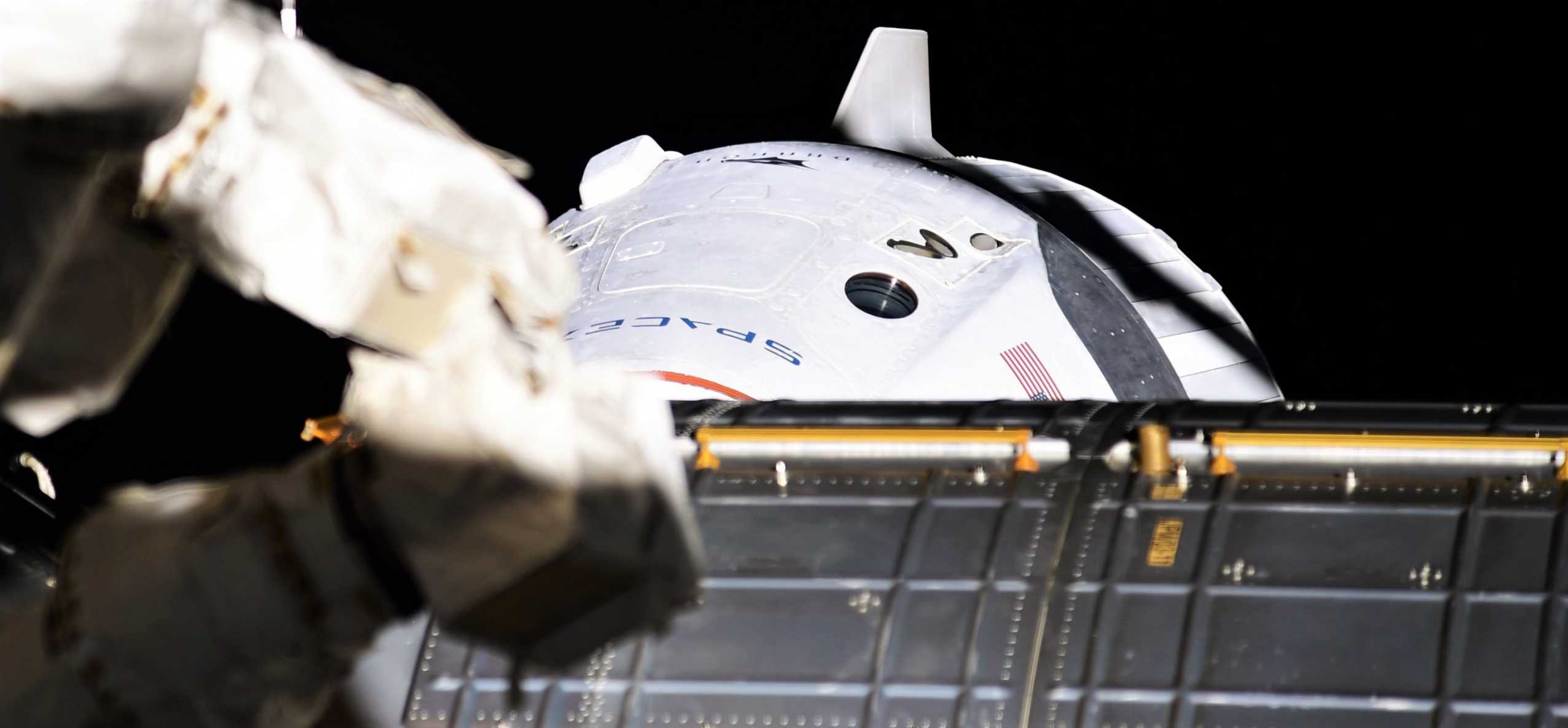
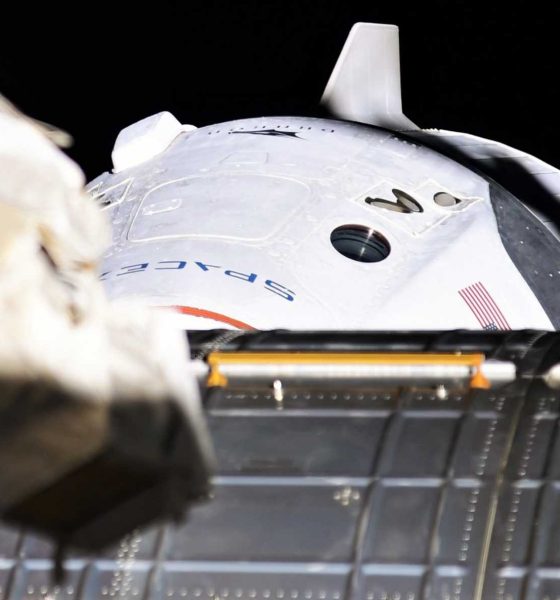
News
SpaceX Crew Dragon spaceship to bring NASA astronauts home this summer
Bob Behnken and Doug Hurley launched to the space station on May 30, for an indeterminate amount of time. Their stay on orbit depends upon a few different factors, including solar array degradation, the status of the next Crew Dragon, and landing zone weather. While Bob and Doug do not yet have a definitive return date, NASA officials have said they are looking at August as a return time frame.
The mission, known as Demo-2, is the first to fly humans from Florida since the end of the shuttle program in 2011. It’s also SpaceX’s first mission to carry astronauts. But it won’t be the last. The California-based aerospace company is gearing up for its next crewed mission. Known as Crew-1, this flight will see three NASA astronauts, and one Japanese astronaut soar to the space station inside another Crew Dragon capsule.
The two missions are interconnected. Demo-2 is the final test flight of the Crew Dragon capsule, and at the end of the mission, NASA is expected to certify the craft to regularly carry humans to and from the space station. For nearly a decade, NASA has been solely dependent upon Russia to carry its astronauts, but now, the agency will have more flexibility with flights.
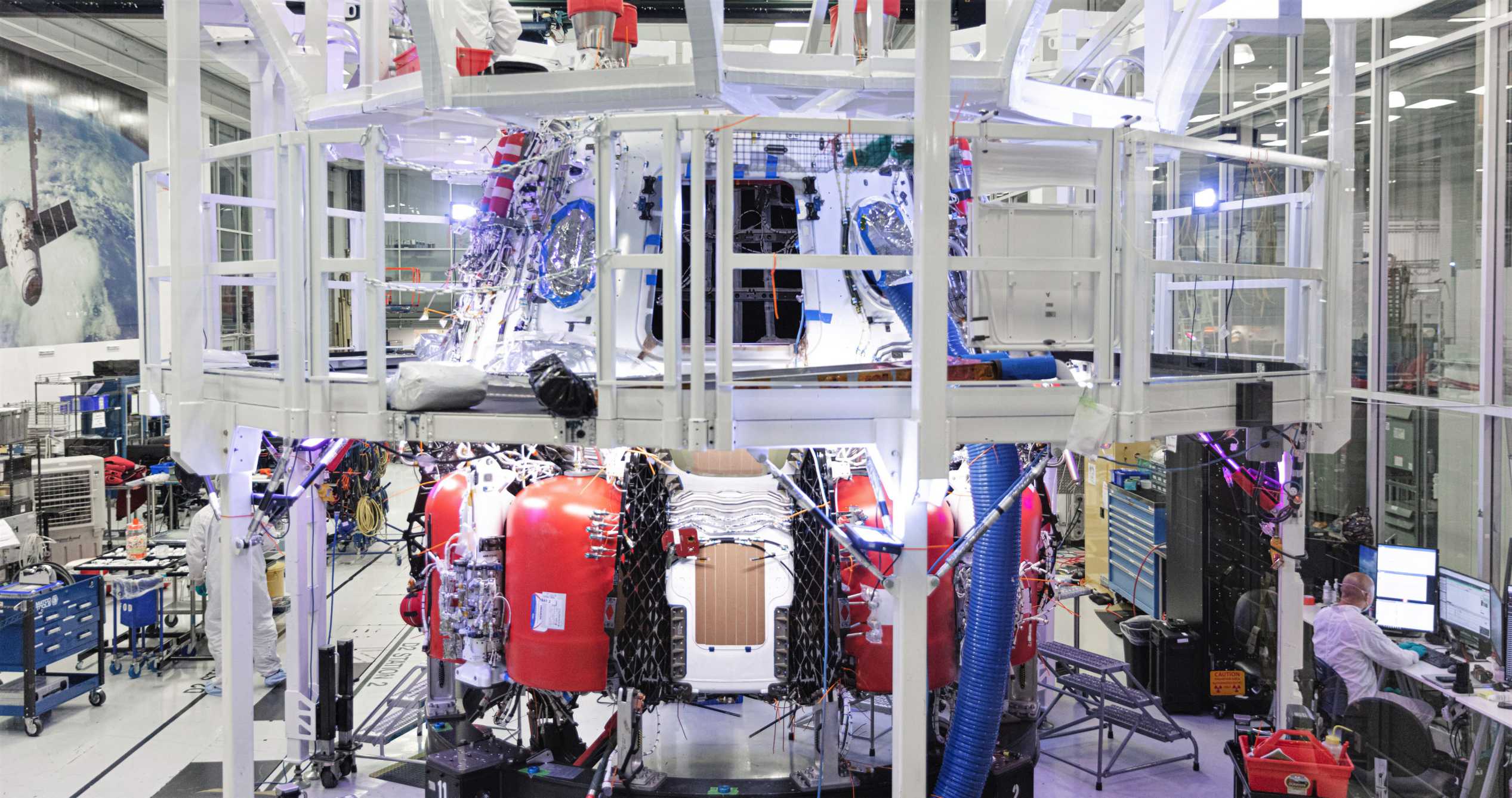
Before Demo-2 launched, NASA officials estimated that the Bob and Doug could stay on station anywhere from one to four months. The agency wanted to see how the Dragon performed on orbit before specifying the length of time the crew would remain on orbit.
“We didn’t prescribe the length of the Demo-2 mission until we got the crew on orbit and we could see the performance of the Dragon,” Ken Bowersox, acting administrator for NASA’s human spaceflight program said on Tuesday. “The Dragon is doing very well, so we think it’s reasonable for the crew to stay up there a month or two. The actual details are still being worked out.”
Bowersox explained that the mission is going well, and the spacecraft is holding up as expected. The Crew version of SpaceX’s Dragon capsule has been to the space station one other time. During its first test flight, called Demo-1. This mission launched in 2019, without people on board. The craft proved it could dock and undock itself with the space station, and even spent about a week attached to the orbital outpost.
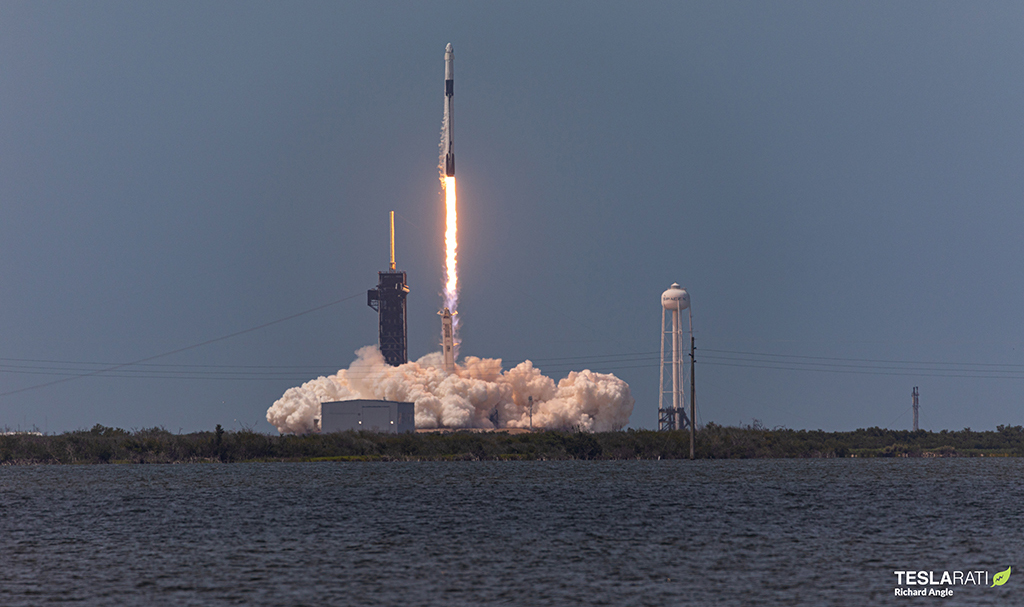
Now, NASA and SpaceX are putting the craft through its paces and seeing how well it holds up over time against the harsh environment of outer space. Some of the craft’s most sensitive electronics, namely the solar panels, have a shelf life in space. That time period is limited to 120 days, so NASA wants the crew to come home before that time.
The next batch of astronauts are expected to launch in late August or early September, if all goes according to plan. But, in order for them to launch, Bob and Doug have to come home several weeks before the planned liftoff so that the Dragon can be evaluated and certified.
To that end, NASA is looking at bringing the Demo-2 crew home in late July or early August. This will allow them to help with station maintenance, as well perform a spacewalk or two. Since April, Chris Cassidy has been the sole NASA astronauts on board, as the space station has been operating on a skeleton crew. The addition of Bob and Doug allows the crew to do more routine maintenance, as well as some research experiments.
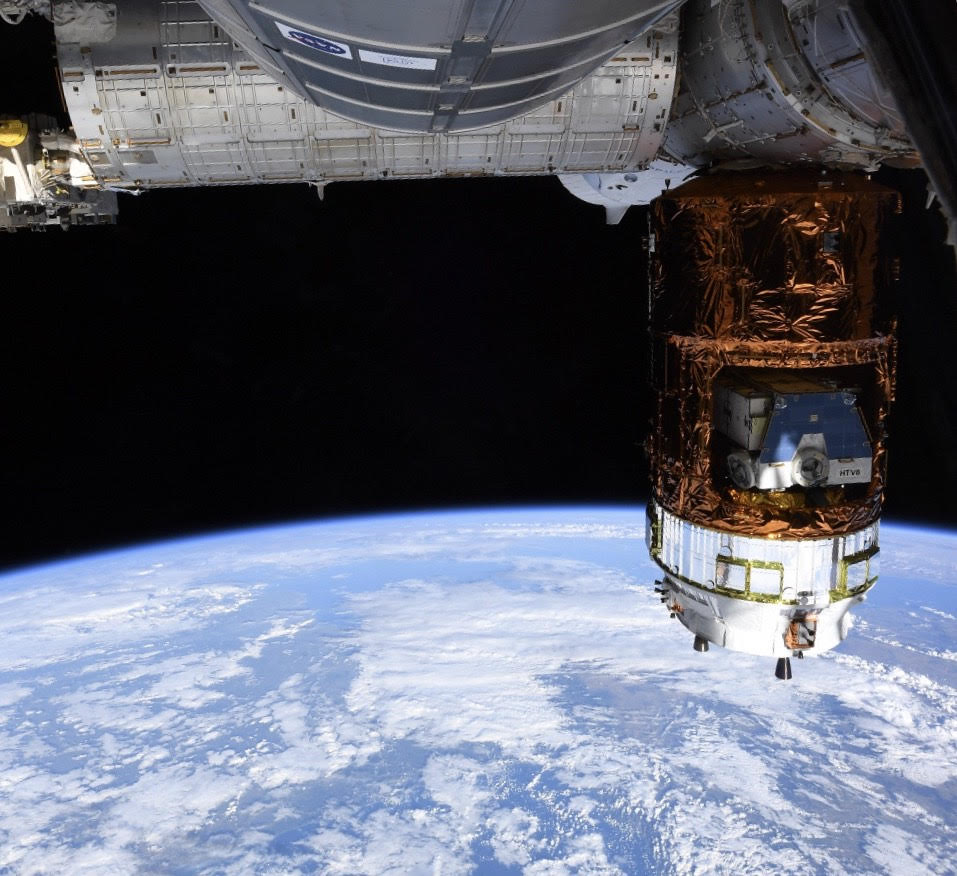
Bob Behnken is expected to perform at least two spacewalks — one in late June, followed by one in early July. Behnken will join Chris Cassidy in replacing batteries on the space station’s exterior. The batteries were delivered on a recent cargo resupply mission and will help power the space station.
While Behnken is suited up and working outside the station, Doug Hurley will operate the space station’s robotic arm, helping Behnken and Cassidy move about during their spacewalks.
The plans were brought up in a joint meeting on Tuesday of the National Academies of Sciences, Engineering and Medicine’s Space Studies Board and the Aeronautics and Space Engineering Board.
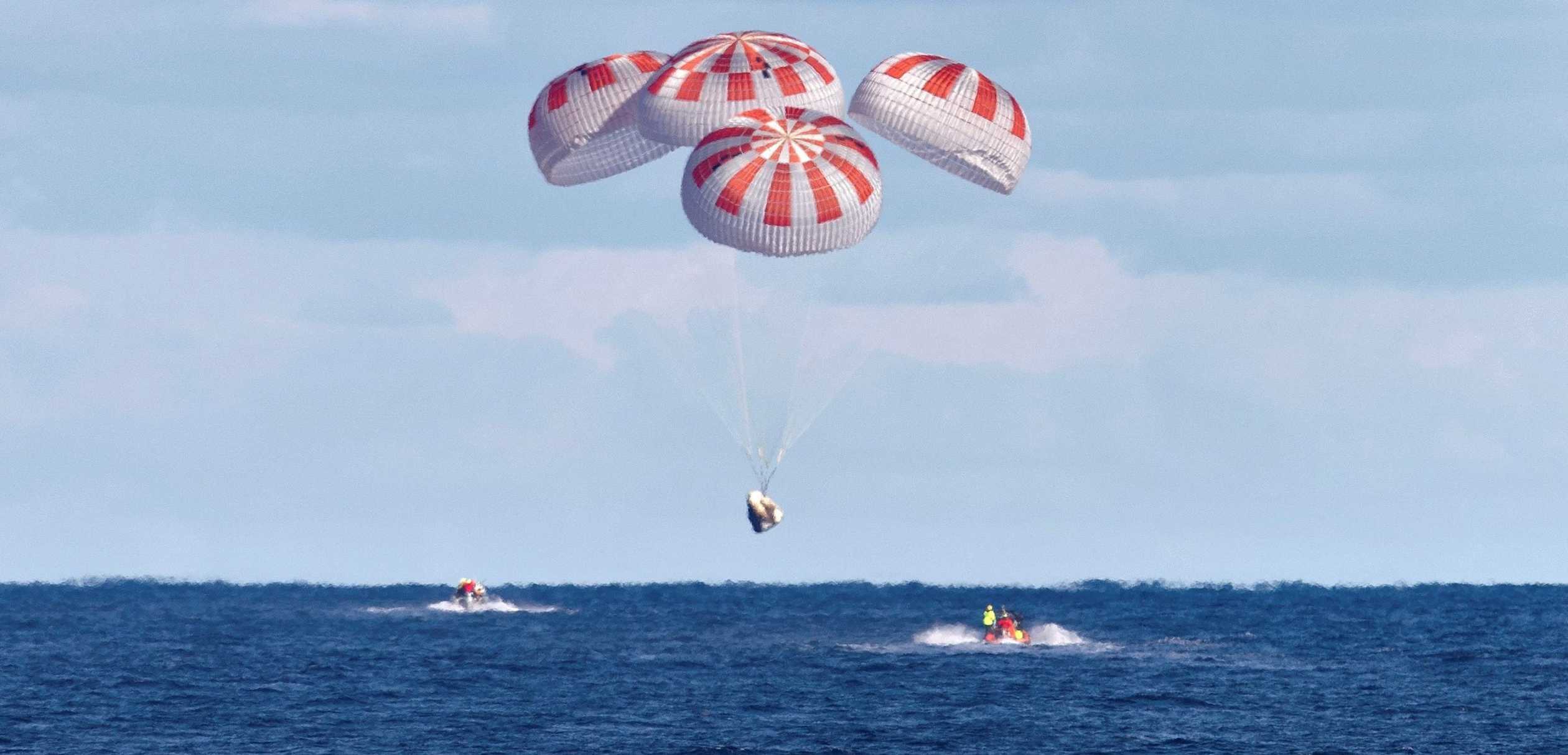
“It is very likely that by the end of July, we will have conducted some spacewalks with Chris Cassidy and Bob Behnken, replaced some batteries on the ISS, and we’ll — about two months from now — start thinking about bringing Bob and Doug home,” Bowersox said. “We’d like to get them home some time in August.”
Bowersox is a former astronaut, who flew on five shuttle missions. He recently took over as acting head of NASA’s human spaceflight division after the previous administrator, Doug Loverro, suddenly resigned. That change in leadership took place just days before Hurley and Behnken took flight. Industry sources say Loverro’s departure had to do with him breaking agency rules during a competition to procure bids for NASA’s upcoming lunar lander program.
While the timing was suspect, the Demo-2 mission was unaffected and went off without a hitch.
Check out Teslarati’s Marketplace! We offer Tesla accessories, including for the Tesla Cybertruck and Tesla Model 3.

Elon Musk
Elon Musk’s X will start using a Tesla-like software update strategy
The initiative seems designed to accelerate updates to the social media platform, while maintaining maximum transparency.

Elon Musk’s social media platform X will adopt a Tesla-esque approach to software updates for its algorithm.
The initiative seems designed to accelerate updates to the social media platform, while maintaining maximum transparency.
X’s updates to its updates
As per Musk in a post on X, the social media company will be making a new algorithm to determine what organic and advertising posts are recommended to users. These updates would then be repeated every four weeks.
“We will make the new 𝕏 algorithm, including all code used to determine what organic and advertising posts are recommended to users, open source in 7 days. This will be repeated every 4 weeks, with comprehensive developer notes, to help you understand what changed,” Musk wrote in his post.
The initiative somewhat mirrors Tesla’s over-the-air update model, where vehicle software is regularly refined and pushed to users with detailed release notes. This should allow users to better understand the details of X’s every update and foster a healthy feedback loop for the social media platform.
xAI and X
X, formerly Twitter, has been acquired by Elon Musk’s artificial intelligence startup, xAI last year. Since then, xAI has seen a rapid rise in valuation. Following the company’s the company’s upsized $20 billion Series E funding round, estimates now suggest that xAI is worth tens about $230 to $235 billion. That’s several times larger than Tesla when Elon Musk received his controversial 2018 CEO Performance Award.
As per xAI, the Series E funding round attracted a diverse group of investors, including Valor Equity Partners, Stepstone Group, Fidelity Management & Research Company, Qatar Investment Authority, MGX, and Baron Capital Group, among others. Strategic partners NVIDIA and Cisco Investments also continued support for building the world’s largest GPU clusters.
News
Tesla FSD Supervised wins MotorTrend’s Best Driver Assistance Award
The decision marks a notable reversal for the publication from prior years, with judges citing major real-world improvements that pushed Tesla’s latest FSD software ahead of every competing ADAS system.

Tesla’s Full Self-Driving (Supervised) system has been named the best driver-assistance technology on the market, earning top honors at the 2026 MotorTrend Best Tech Awards.
The decision marks a notable reversal for the publication from prior years, with judges citing major real-world improvements that pushed Tesla’s latest FSD software ahead of every competing ADAS system. And it wasn’t even close.
MotorTrend reverses course
MotorTrend awarded Tesla FSD (Supervised) its 2026 Best Tech Driver Assistance title after extensive testing of the latest v14 software. The publication acknowledged that it had previously criticized earlier versions of FSD for erratic behavior and near-miss incidents, ultimately favoring rivals such as GM’s Super Cruise in earlier evaluations.
According to MotorTrend, the newest iteration of FSD resolved many of those shortcomings. Testers said v14 showed far smoother behavior in complex urban scenarios, including unprotected left turns, traffic circles, emergency vehicles, and dense city streets. While the system still requires constant driver supervision, judges concluded that no other advanced driver-assistance system currently matches its breadth of capability.
Unlike rival systems that rely on combinations of cameras, radar, lidar, and mapped highways, Tesla’s FSD operates using a camera-only approach and is capable of driving on city streets, rural roads, and freeways. MotorTrend stated that pure utility, the ability to handle nearly all road types, ultimately separated FSD from competitors like Ford BlueCruise, GM Super Cruise, and BMW’s Highway Assistant.
High cost and high capability
MotorTrend also addressed FSD’s pricing, which remains significantly higher than rival systems. Tesla currently charges $8,000 for a one-time purchase or $99 per month for a subscription, compared with far lower upfront and subscription costs from other automakers. The publication noted that the premium is justified given FSD’s unmatched scope and continuous software evolution.
Safety remained a central focus of the evaluation. While testers reported collision-free operation over thousands of miles, they noted ongoing concerns around FSD’s configurable driving modes, including options that allow aggressive driving and speeds beyond posted limits. MotorTrend emphasized that, like all Level 2 systems, FSD still depends on a fully attentive human driver at all times.
Despite those caveats, the publication concluded that Tesla’s rapid software progress fundamentally reshaped the competitive landscape. For drivers seeking the most capable hands-on driver-assistance system available today, MotorTrend concluded Tesla FSD (Supervised) now stands alone at the top.
News
Elon Musk’s Grokipedia surges to 5.6M articles, almost 79% of English Wikipedia
The explosive growth marks a major milestone for the AI-powered online encyclopedia, which was launched by Elon Musk’s xAI just months ago.

Elon Musk’s Grokipedia has grown to an impressive 5,615,201 articles as of today, closing in on 79% of the English Wikipedia’s current total of 7,119,376 articles.
The explosive growth marks a major milestone for the AI-powered online encyclopedia, which was launched by Elon Musk’s xAI just months ago. Needless to say, it would only be a matter of time before Grokipedia exceeds English Wikipedia in sheer volume.
Grokipedia’s rapid growth
xAI’s vision for Grokipedia emphasizes neutrality, while Grok’s reasoning capabilities allow for fast drafting and fact-checking. When Elon Musk announced the initiative in late September 2025, he noted that Grokipedia would be an improvement to Wikipedia because it would be designed to avoid bias.
At the time, Musk noted that Grokipedia “is a necessary step towards the xAI goal of understanding the Universe.”
Grokipedia was launched in late October, and while xAI was careful to list it only as Version 0.1 at the time, the online encyclopedia immediately earned praise. Wikipedia co-founder Larry Sanger highlighted the project’s innovative approach, noting how it leverages AI to fill knowledge gaps and enable rapid updates. Netizens also observed how Grokipedia tends to present articles in a more objective manner compared to Wikipedia, which is edited by humans.
Elon Musk’s ambitious plans
With 5,615,201 total articles, Grokipedia has now grown to almost 79% of English Wikipedia’s article base. This is incredibly quick, though Grokipedia remains text-only for now. xAI, for its part, has now updated the online encyclopedia’s iteration to v0.2.
Elon Musk has shared bold ideas for Grokipedia, including sending a record of the entire knowledge base to space as part of xAI’s mission to preserve and expand human understanding. At some point, Musk stated that Grokipedia will be renamed to Encyclopedia Galactica, and it will be sent to the cosmos.
“When Grokipedia is good enough (long way to go), we will change the name to Encyclopedia Galactica. It will be an open source distillation of all knowledge, including audio, images and video. Join xAI to help build the sci-fi version of the Library of Alexandria!” Musk wrote, adding in a later post that “Copies will be etched in stone and sent to the Moon, Mars and beyond. This time, it will not be lost.”








